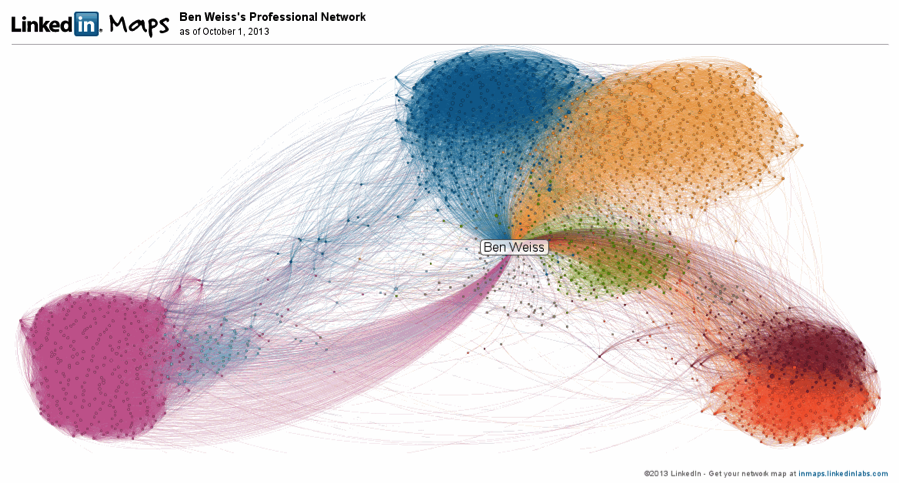Signals empower us to predict the future by learning from the past.
We all learn from the past. So if you failed a mathematics exam in school, you learned you had to study harder not to fail the next one. Events that happened in the past can be measured in many different ways. Measuring a past event puts it into focus. In data mining, this process translates into creating a descriptive feature to describe or tell a story about the past in some way, shape, or form.
We call these descriptive features Signals. Signals are the indicators extracted from raw data that have proven to be valuable for solving a particular problem. Signals can also be created from other Signals by transforming one piece of information into something more meaningful or interesting. For example, using the initial Signal extracted from raw data — in this case, a test score — we can create several Signals that capture past school performance in mathematics and science for a certain student.
Read More
Topics:
Signal Hub Technologies,
Analytics,
Signals
When to nudge a delinquent customer for a payment — that is the question. Or rather, that is one of many — many — questions that Signals are helping telecom companies (telcos) answer. Because when to call and ask for payment can actually help determine whether to call at all, and eliminating calls can lead to significant savings. So how do Signals do this? And more important, how can telcos, specifically, take advantage of these Signals to improve customer experience and maximize bottom-line impact?
Read More
Topics:
Analytics,
Signals,
Marketing,
Supply Chain & Operations
Data is like oxygen for a corporation. Just like we’re surrounded by the atmosphere, corporations live and breathe data. Likewise, as social, economic, and other spheres continue to produce data, it grows and moves and changes every second of every day.
As the breadth and depth of this corporate-owned intel vastly increases with technological advances, a pressing question facing the world of business is how to best leverage this huge, ubiquitous asset known as Big Data.
Read More
Topics:
Big Data,
Arnab Gupta,
Signals,
Data Equity

When people shop online, they know they’re sharing personal data to be collected and used for marketing purposes. And yet we’re surprised by how many companies fail to do even the bare minimum of analysis with the data they’ve painstakingly gathered. By implementing just a few basic analytics techniques into your marketing practices, you can quickly gain insight into your site’s performance, your customers’ satisfaction, and the effectiveness of your marketing campaigns. And if you take your analytics a few steps further, you can actually predict what your customers want and gain specific recommendations about how best to market to them — whether you have hundreds of customers or millions of them.
Here, we’ll show you the basic building blocks of retail marketing analytics. The insights gathered from these techniques can help you optimize business strategies and increase revenues. We’ll show you which metrics, or key performance indicators (KPIs), matter the most and how they can be used to measure the success of a retail enterprise. We’ll also shed some light on what’s possible once you establish the basics: the more advanced analytics techniques that deliver predictive insights and recommended actions. Your crash course starts now.
Read More
Topics:
Big Data,
Data Science,
Analytics,
Signals,
Marketing
Imagine trying to fill a thimble with water — from a fire hose. Unfortunately, if you’re still storing data with the once-good intention of mining it later, you might as well give it up. In this analogy, the wasted water represents not only the gushing, wasted data but also the enormous waste of time, money, and resources spent maintaining an outdated concept. Sure, your data warehouse if full, but full of what? If you’re only capturing a fraction of what is available, what are the chances that what you have is really valuable? And what valuable information are you letting go to waste?
Read More
Topics:
Big Data,
Signals
An exploration of how employers can better use the data available on social networks to improve and expedite the hiring process.
I have been an avid user of LinkedIn since 2004, first as a prospective employer, then as a networking tool, and more recently as a content site. It’s been amazing to see the evolution of the platform and the tremendous value I have been able to derive from it over time. One of the most interesting views that LinkedIn affords you over time is the InMaps visualization of your professional network.
Read More
Topics:
Big Data,
Signals
To predict the next shooting — in time to do something about it — we need to be looking at more open source data.
In the aftermath of yet another mass shooting in the United States, we find ourselves asking the same questions we’ve asked before: Why did this happen? Were there signs we missed? Could we have prevented this? And while there’s never a satisfying answer as to why, we can usually say that yes, there were signs — and they were missed — and yes, we most likely could have prevented this. Which leads us to the next question: how?
Read More
Topics:
Security & Defense,
Videos,
Signals
A new report, featured in The New York Times, highlights the benefits of Big Data and machine learning in the airline industry and beyond.
The travel industry has always been a vast data collector. Every airline reservation, every hotel booking, every car rental ends up in a conventional database of structured data. But today Big Data — the unstructured data that includes ratings on blog sites, likes on social media, conversations with call centers, customer clickstreams, and more — is becoming increasingly important in determining how travel companies keep customers coming back.
Read More
Topics:
Big Data,
Machine Learning,
Signals,
Marketing
The New 1:1 Marketing Approach in Four (Not-So-Easy) Steps
The concept of 1:1 marketing generated a lot of hype — ten years ago. It changed the way companies reached their customers, creating that illusion that personalized marketing was actually… well, personal. But it also raised expectations of customers. They became acutely aware that their actions — especially those online — were tracked and used for marketing purposes. Eventually, they ignored companies’ attempts to advertise based on a search term or status update. “Really? Just because I posted that I’m baking cookies with my son does not mean I want to buy Chips Ahoy right now.”
Read More
Topics:
Big Data,
Data Science,
Signals,
Marketing
Why we should stop talking about Big Data and start talking about Big Signal.
“Big Data” seems to be the phrase on everyone’s lips these days — the new Big Bandwagon for enterprise, government, investors, and entrepreneurs. But I would respectfully submit that the term may be missing the point… and those who continue to define the phenomenon in that way may miss the first wave of the real opportunity.
Read More
Topics:
Big Data,
Data Science,
Machine Learning,
Signals












